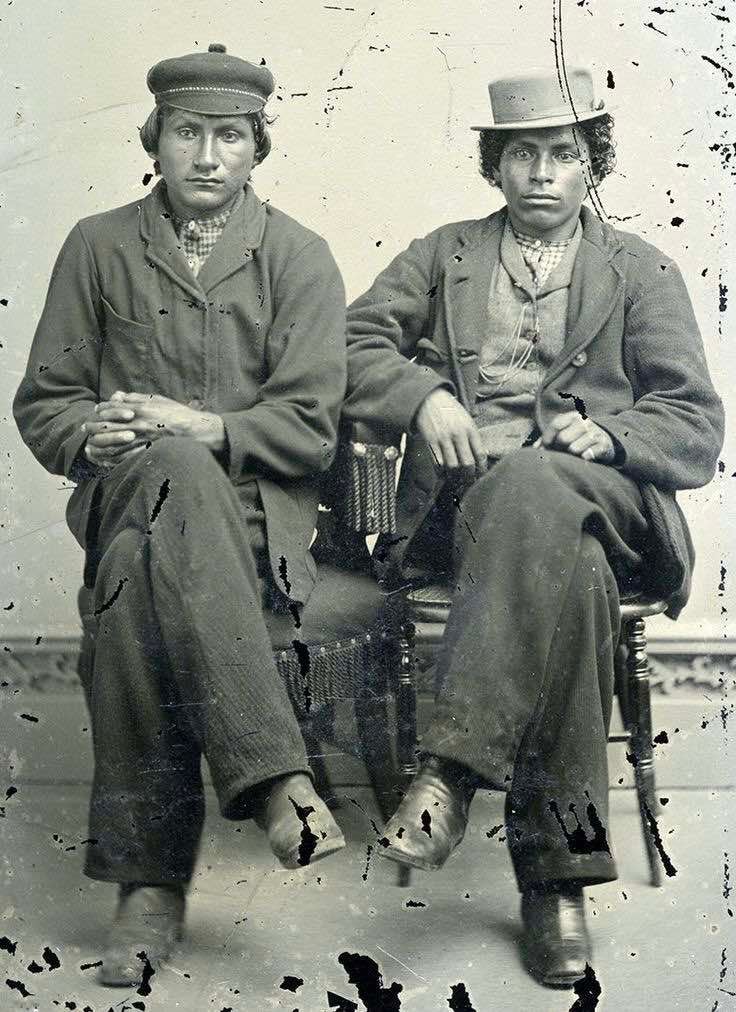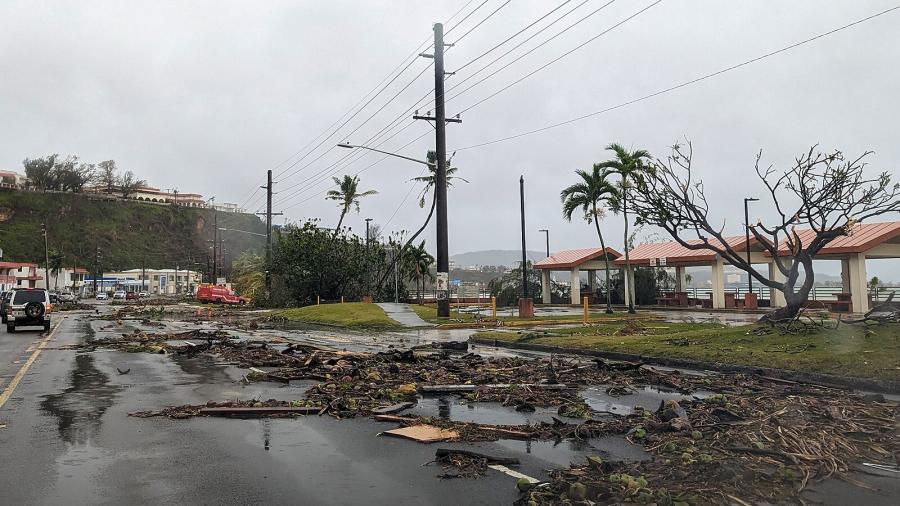
By Hartman Deetz (Mashpee Wampanoag)
In the mid-1600s, my ancestor, Mittark, was the Sachem of Aquinnah, a village on the island of Nopee, known today as Martha's Vineyard. Mittark had two sons, Ompany and Keteanummin. I descend from Ompany, the eldest son, who had converted to the Christian faith. After the passing of Mittark, Keteanummin was selected by the people of Aquinnah as the next Sachem, as the people rejected Ompany for his conversion to Christianity. Ompany felt cheated; following the guidelines of the Christian faith and the standards of English law, he argued that as the eldest son, he was the rightful inheritor of the title Sachem and the land of Aquinnah. The people came together and with the approval of Keteanummin, Ompany was granted a one square mile tract of land for him and the other Christianized Wampanoag people of the island. In 1659, the community of Manitouwattootan, or what would come to be called Christian Town, was founded.
Christian Town existed as a self-governed Native community only until 1698, when it was decided that in spite of their Christian faith, that they would need an overseer of the white race to look after their affairs. The first non-Native overseer was Experience Mayhew, and after him, his son, Zachariah Mayhew. These overseers were responsible for town finances, policing, charity, schooling, religious instruction, and most importantly for this story, real estate transfers. Little by little, the land held in common was whittled down to nearly half of its original size, from a square mile (640 acres) to a mere 390 acres in 1828. It was in this year that the new overseer decided to divide the land and issue allotments to each family, a process that would be repeated again and again for Native lands held in common across the United States in decades to come.

Francis Peters and Alonzo Nelson.
A single man, Diadamy Howwossowee, was allotted eight acres with a three-and-a-half acre woodlot, while my ancestor Francis Peters and his family of six were allotted 48.25 acres and a 9-acre woodlot. My family held on to these two parcels until 1878 when they were sold in an illegal land transfer by Leander Peters, without the legally binding consent or approval of the overseer. In 1909, Joseph Quonowell Mingo raised $40 to repair the meeting house that sat in the middle of the burial ground on the last 4 acres of Christian Town. His grandson, Samuel George Mingo, would be the last Wampanoag resident of Christian Town in 1928.
Fast forward.

In 2001, I started to learn the trade of tile setting, working as a laborer for a company that primarily contracted on Martha's Vineyard. Each morning we would arrive at the small workmen’s ferry and load our supplies onto the deck of the boat. Once we crossed the sound we would unload into our respective work vans and disperse to the various work sites across the island. We worked for late-night television talk show hosts, major motion picture film directors, award-winning actresses, sports team owners, and bankers whose family names would appear in headlines associated with the ups and downs of the national economy. Through this work for the elite, I was privileged to see many parts of the island that most visitors will never see. I got to walk in many parts of my ancestral homeland that many of my relatives would never have the pleasure to know. Sometimes we might drive a mile or two along “private” roads to vast estates to work in the mansions that might house as many as three separate kitchens.
It was about 2005 when I found myself in the passenger seat of the work van as we pulled up to a gate on Christian Town Road. The lead tile setter leaned out the window and entered a code and the gate lifted, allowing us access to a narrow dirt road. We drove a good distance through the summer heat in the shade of the trees with the tires kicking up dust in our wake. Eventually, we arrived at what seemed like a comparatively modest house for our clientele. It had a hot tub and sauna but no pool; three wings, but only a single story. While many of our clients were entirely removed during the construction of their trophy homes or considered themselves above talking to “the help,” others were overbearing, wanting us to explain and talk through every detail as they supervised our work. This client was different. Although we never met the husband of the couple, the wife was often home. She was warm and engaging, often asking about the expectations for the work plan for the day, and sometimes raising a question at the start or the end of our day.
The client never knew about my personal connection to the land her house sat on, that my family was illegally dispossessed of the land, but throughout the day and during our lunch breaks I would share the information with the lead tile setter, who was always interested to hear about the history and “the time of the Indians,” as if it was some ancient and bygone era. When I would talk about how by the letter of the law I should have claim to some of the land in Christian Town, he would interject, “Just make sure that she doesn't hear you talking about that. She might not want us coming back if she thinks you're going to steal her house from her. That all happened a long time ago, and these people bought it fair and square. All the people that did that back then are dead and gone. You just need to get over it.”
There was a truth to what he said. The woman showed me nothing but kindness and related to us as workers in her house with a humility and respect that indicated to me that she, herself, had at least at some point known what it was to work. This woman and her family were not personally responsible for my family's dispossession even though she benefited from it, her family's house sitting on land that once belonged to mine.
But there were still times I could not help but reflect on the sordid story that brought me there, to be working in her home on my hands and knees, spreading grout across the tiles on the kitchen floor. How those of my family who chose to convert to the new religion and embrace the Christian faith, the English system of law, were more quickly dispossessed and separated from their ancestral homeland than those who held on to the faith of their ancestors. By becoming Christian, did they somehow cease to be Wampanoag? Did that change in religion somehow alter their ancestry? Did it dissolve their connection to the place their family lines had come from? And yet at the same time, when it benefited the English colonizers, their racialized identity dictated that they should be given white overseers, even when they were functioning as a Christian community.
And then there is the idea of this all being “a long time ago.” My grandmother, Shirley (Jourdain) Peters, was born in 1922, while Samuel George Mingo was still living in Christian Town. Only one year after Mingo moved away from Christian Town, my grandfather, Russell Peters, was born. Was it really so long ago as to be forgotten into the realms of ancient history? When we can put names and dates that are in violation of the letter of the law, that the fragile paper still exists, the ink from the pen held by my family members’ hands still can be read.
As I worked on my knees, backing up across the black granite tiles, spreading and cleaning the grout, the homeowner offered me a cold drink, a kind gesture on a hot summer day. I knew it was true: if she heard me talking about my rightful claim to the title of the land her house sat on, she might not be so kind. I am certain the work to achieve the wealth to buy a luxurious home down a beautiful and private road would make her hostile to any attempts to reclaim or seek restitution for the wrongs done two or three generations ago. I am certain that if the subject were brought up, she would have sought to separate herself through time and space from my family's dispossession; she would have cited her own personal kindness and disposition to separate herself from the systematic abuses of racialized colonization. She might have even pointed to the relative modesty of her home as compared to the opulence of the bankers, sports team owners, and hall of fame musicians' homes that we otherwise worked in.
The other truth was that I needed my job. I had two young children, and I had to continue to make ends meet. I took the cold drink and the kindness for what they were. We made some small talk and I went back to work, and she went about her day. I finished out the day and was in and out of the house washing out the buckets. Walking into the house, something caught my eye in the door frame: a small metal ornament, about three inches high, inscribed with the word “Israel.”
I couldn't help but to question inside myself all the mounting double standards. Three thousand years ago there was no Christian faith, no Muslim faith. Did the people of what is now Palestine stop being from the land when their beliefs changed? Did the converts of Christian Town become white so that they could be trusted to manage their own affairs? How is it that I know that the talk of taking homes that they had worked and saved for would bring about anger and hostility, and yet it is a burden that Palestinian families are expected to bear? The idea that land illegally sold by Lander Peters in 1878 was so long ago that I should get over it, yet the claims of land over 2,000 years old, without name or title, allow the complete disregard of a whole peoples’ humanity? Can relatives who don't agree about their faith, like Keteanummin and his Christian brother Ompany, live together in peace? Some of my ancestors were traditionalists who prayed to Manitoo. Some were Christian, some were even Mayflower passengers, and some were Jewish. Whatever your faith is, or the faith of your ancestors were, carry yourself through your actions.
--Hartman Deetz (Mashpee Wampanoag) has been active in environmental and cultural stewardship for over 20 years. He is a traditional artist as well as a singer and dancer, having shown his art in galleries and performed for audiences from coast to coast across the U.S. He is currently a 2023-2024 Cultural Survival Writer in Residence.
Top photo: Aaron Cooper, Christian Town resident, conducted tours of Martha's Vineyard.



